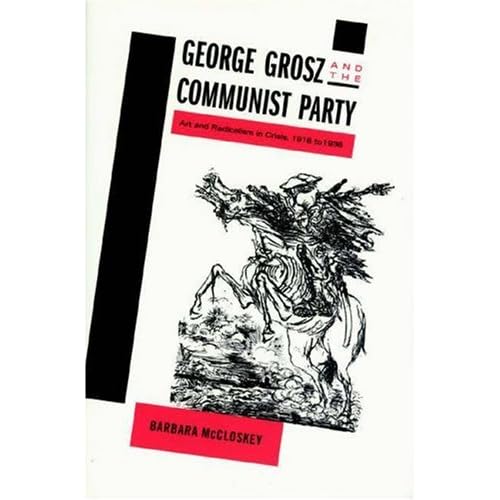George Grosz and the Communist Party: Art and Radicalism in Crisis, 1918-1936
Category: Books,Literature & Fiction,History & Criticism
George Grosz and the Communist Party: Art and Radicalism in Crisis, 1918-1936 Details
Review "[McCloskey] explains how Grosz's art illuminates the relationship between politics and art, states that a number of his works reflect both the shortcomings and the strengths of the Communist party, and draws parallels between feminism and Marxism." (ARTbibliographies Modern)"This finely crafted and concisely written book is a major contribution to the literature on George Grosz. It will provoke a lively scholarly debate."―Maria Makela, Maryland Institute Read more From the Publisher George Grosz (18931959) occupied the forefront of German Expressionism, Dadaism, and New Objectivity in the years before Hitler's rise to power in 1933. In the aftermath of World War I, the November Revolution, and the founding of the German Communist Party in 1918, Grosz also became the Communist Party's leading and most notorious artist. His bitterly satiric drawings of bloated capitalists, sadistic militarists, and fatuous government and church officials served as the focus of public controversy that landed Grosz in court on three separate occasions during the 1920s. In the 1930s, the Nazis denounced him as Germany's "Cultural Bolshevist #1." Here, however, Barbara McCloskey shows that Grosz's art and activities were equally, if not more, controversial for the Communist Party in whose name Grosz carried out his work. Drawing on Communist Party press reports, documents, and congress proceedings, McCloskey explores for the first time Grosz's changing involvement with the Party and provides a vivid history of the often tense and uncertain relationship between vanguard art and revolutionary politics during the turbulent years of the Weimar Republic. Continuing her account with his emigration to New York in 1933, McCloskey documents Grosz's interaction with prominent members of New York's anti-Stalinist left, where conflicts with the Communist Party profoundly influenced Grosz's final rejection not only of Communism, but also of art in the service of politics. McCloskey's study of Grosz's role in the politicized art world of New York sheds new light on the cultural crises of the 1930s and the depoliticization and ultimate demise of radical leftism on the eve of World War II. Read more From the Inside Flap "This finely crafted and concisely written book is a major contribution to the literature on George Grosz. It will provoke a lively scholarly debate."--Maria Makela, Maryland Institute Read more From the Back Cover "This finely crafted and concisely written book is a major contribution to the literature on George Grosz. It will provoke a lively scholarly debate."--Maria Makela, Maryland Institute Read more About the Author Barbara McCloskey is Assistant Professor of Art History at the University of Pittsburgh. Read more

Reviews


